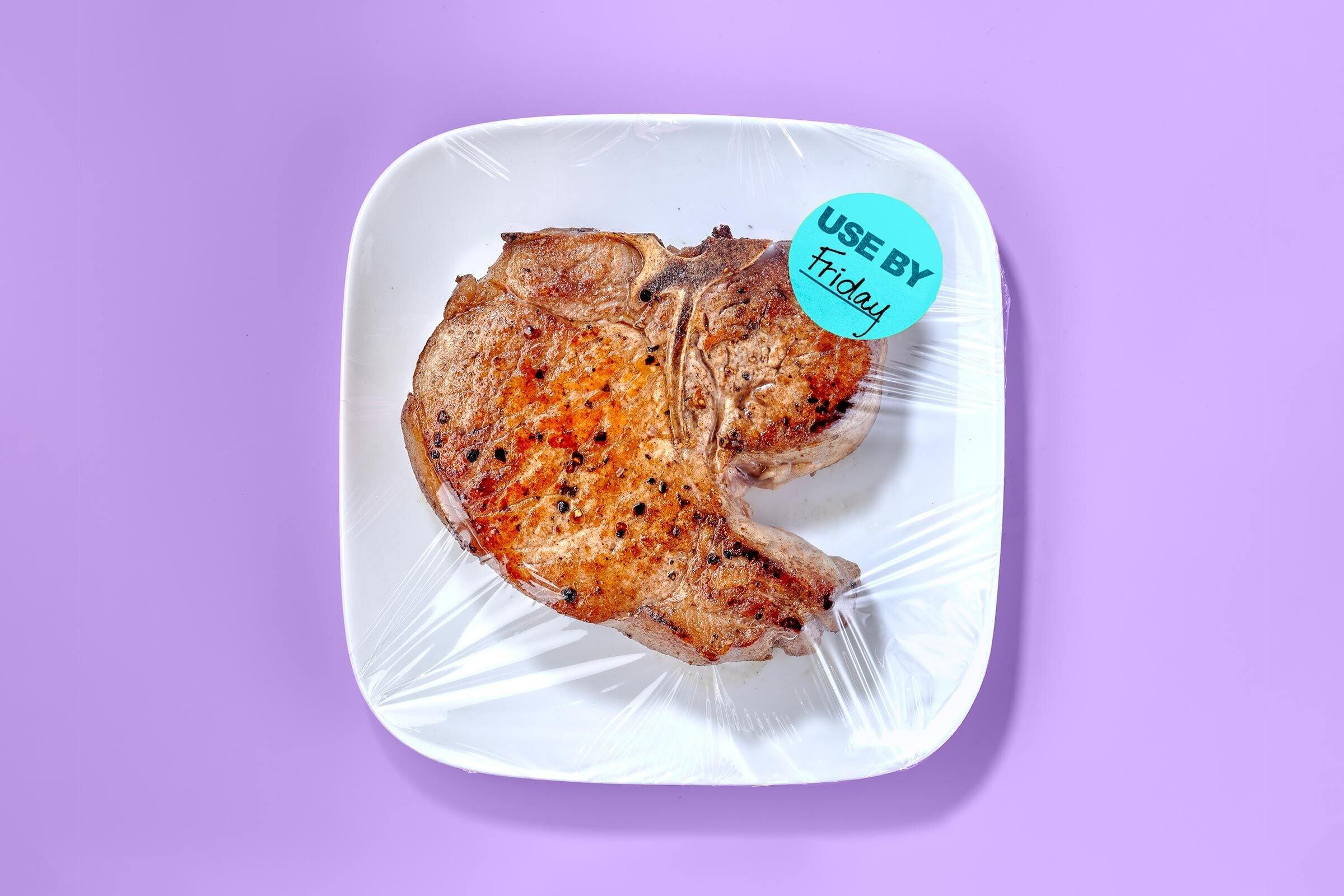

Articles
How To Store Cooked Meat
Modified: October 21, 2024
Learn how to properly store cooked meat to ensure freshness and prevent foodborne illnesses. Our expert articles provide step-by-step instructions and tips for safe meat storage.
(Many of the links in this article redirect to a specific reviewed product. Your purchase of these products through affiliate links helps to generate commission for Storables.com, at no extra cost. Learn more)
Introduction
Storing cooked meat properly is essential to maintain its quality, taste, and safety. Whether you have some leftover roast beef, grilled chicken, or cooked ground meat, knowing the right storage techniques can prevent spoilage and foodborne illnesses. In this article, we will guide you through the best practices of storing cooked meat to keep it fresh and delicious.
Proper storage of cooked meat involves several key factors, including temperature, packaging, and labeling. By following these guidelines, you can ensure that your meat stays safe to eat and retains its flavor and texture.
Let’s explore the various techniques for storing cooked meat:
Key Takeaways:
- Properly storing cooked meat is crucial for maintaining safety and flavor. Refrigeration, freezing, vacuum sealing, and using airtight containers are effective methods. Regularly checking for spoilage is essential to ensure the meat remains safe to consume.
- Cooling meat before storage, dividing it into portions, using suitable containers, storing in appropriate temperature zones, and checking for spoilage are key practices. Following these guidelines ensures the safety, quality, and flavor of stored cooked meat.
Read more: How To Store A Brisket
Proper Storage Techniques
1. Refrigeration: Refrigeration is the most common method of storing cooked meat. Keep the meat in airtight containers or wrap it tightly in plastic wrap or aluminum foil before refrigerating. The temperature in the refrigerator should be set at or below 40°F (4°C) to prevent bacterial growth.
2. Freezing: Freezing is an excellent option for long-term storage of cooked meat. Wrap the meat tightly in freezer-safe packaging, such as plastic bags or freezer wrap, to minimize exposure to air and prevent freezer burn. Label the packages with the date to ensure proper rotation.
3. Vacuum Sealing: If you have a vacuum sealer at home, consider using it to store cooked meat. Vacuum sealing removes air from the packaging, preventing freezer burn and extending the shelf life of the meat. Make sure to follow the manufacturer’s instructions for proper sealing.
4. Use of Airtight Containers: Airtight containers are useful for storing smaller portions of cooked meat. Ensure that the containers are made of food-grade material and have secure lids to prevent air and moisture from entering, which can cause spoilage.
5. Proper Labeling and Date Tracking: Labeling your stored meat with the type, date of storage, and any additional relevant information can help you keep track of how long it has been stored. This ensures that you consume the oldest meat first and avoids any potential food waste.
By utilizing these storage techniques, you can extend the shelf life of your cooked meat and maintain its quality and taste. However, there are a few additional tips to keep in mind for safe and efficient storage of cooked meat.
Refrigeration
Refrigeration is a common method for storing cooked meat, whether it’s leftover steak, roasted chicken, or sautéed ground meat. It helps slow down the growth of bacteria, preserving the quality of the meat for a limited period.
To refrigerate cooked meat:
- Cool the meat before storage: Allow the cooked meat to cool down completely at room temperature before placing it in the refrigerator. Placing hot meat in the fridge can raise its internal temperature, potentially affecting the safety of other food items in the refrigerator.
- Use proper packaging: Transfer the meat to airtight containers or wrap it tightly in plastic wrap or aluminum foil. This helps maintain moisture and prevents the meat from drying out.
- Set the refrigerator temperature: Ensure that your refrigerator is set at or below 40°F (4°C) to inhibit bacterial growth. Use a thermometer to monitor and maintain the desired temperature.
- Store in the right zone: Place the cooked meat on a shelf or drawer away from raw meat or seafood to prevent cross-contamination. If possible, store it on the lower shelves to avoid any potential drips onto other food items.
- Check regularly for spoilage: Cooked meat can typically be stored in the refrigerator for 3-4 days. As time passes, check for any signs of spoilage, such as an off smell, sliminess, or discoloration. If any of these signs are present, discard the meat.
While refrigeration is an effective short-term storage method, it’s important to note that the quality and taste of the meat may deteriorate over time. If you anticipate not consuming the cooked meat within a few days, consider freezing it for longer-term storage.
Freezing
Freezing is an excellent method for long-term storage of cooked meat. It helps preserve the quality, flavor, and texture of the meat by slowing down enzyme activity and inhibiting the growth of bacteria.
Follow these steps to freeze cooked meat:
- Cool the meat: Allow the cooked meat to cool down completely to room temperature before freezing. Placing hot meat in the freezer can raise its internal temperature and affect the safety of other items in the freezer.
- Divide into portions: If you have a large quantity of meat, divide it into smaller portions. This allows for convenient thawing and reduces the risk of freezing and refreezing the entire batch when you only need a portion.
- Wrap properly: Wrap the cooked meat tightly in freezer-safe packaging like plastic bags, heavy-duty aluminum foil, or freezer wrap. Ensure that there is minimal air inside the packaging to prevent freezer burn. Alternatively, use vacuum-sealed bags or airtight containers for optimal results.
- Label and date: Clearly label each package with the type of meat and the date it was frozen. This will help you keep track of the storage time and ensure that you consume the oldest meat first.
- Store at 0°F or below: Set your freezer to a temperature of 0°F (-18°C) or below. This low temperature prevents bacterial growth and maintains the quality of the meat. Use a freezer thermometer to regularly monitor the temperature.
Properly frozen cooked meat can generally be stored for 2-3 months without compromising its quality. However, it is important to note that the longer meat is stored in the freezer, the more it may suffer from flavor and texture deterioration.
When thawing frozen cooked meat, do so in the refrigerator or using the defrost function on your microwave. Avoid thawing at room temperature as this can allow bacteria to multiply. Once thawed, consume the meat within 2-3 days and do not refreeze it unless it has been cooked again.
By following these freezing guidelines, you can conveniently store your cooked meat for longer periods and have it readily available for future meals.
Vacuum Sealing
Vacuum sealing is a popular and effective method for storing cooked meat. This technique involves removing air from the packaging, creating a tight seal that helps preserve the quality and freshness of the meat.
Follow these steps to vacuum seal cooked meat:
- Cool the meat: Allow the cooked meat to cool completely before vacuum sealing. This prevents the buildup of condensation inside the packaging, which can lead to freezer burn.
- Choose suitable packaging: Use vacuum-sealable bags or containers specifically designed for vacuum sealing. These bags are thicker and more durable to withstand the vacuum sealing process.
- Portion the meat: Divide the cooked meat into portion sizes that you are likely to use in one serving. This allows for easy and convenient meal planning.
- Seal the bags: Place the meat inside the vacuum-sealable bag or container and follow the manufacturer’s instructions for sealing. Make sure the seal is tight and secure.
- Vacuum seal the package: Use a vacuum sealer machine to extract the air from the packaging. The machine will create a tight seal, removing oxygen and preventing the meat from freezer burn.
- Label and date the packages: Before storing the vacuum-sealed meat, label each package with the type of meat and the date it was sealed. This will help you keep track of the storage time and ensure proper rotation.
Vacuum-sealed cooked meat can be stored in the refrigerator or freezer, depending on your needs. The vacuum-sealing process extends the shelf life of the meat, maintaining its flavor and texture for a longer period compared to other storage methods.
When it comes time to use the vacuum-sealed meat, simply thaw it in the refrigerator or using the defrost function on your microwave. As with any frozen meat, avoid thawing at room temperature to minimize the risk of bacterial growth.
By vacuum sealing your cooked meat, you can effectively maintain its quality and freshness, ensuring that it is ready to be enjoyed whenever you desire.
Read more: How To Store Salmon
Use of Airtight Containers
Using airtight containers is a convenient and reliable method for storing small portions of cooked meat. These containers prevent air and moisture from getting in, keeping the meat fresh and protected from bacteria and freezer burn.
Here’s how to effectively use airtight containers for storing cooked meat:
- Choose the right containers: Select high-quality, food-grade containers that are specifically designed to be airtight. These containers should have secure lids that create a tight seal, preventing any air or moisture from entering.
- Cool the meat: Allow the cooked meat to cool down completely before placing it in the airtight containers. Placing hot meat in a sealed container can cause condensation, leading to the growth of bacteria.
- Portion the meat: Divide the cooked meat into individual or serving-sized portions. This makes it easier to grab the amount you need without exposing the entire batch to air.
- Place in the containers: Transfer the cooled meat into the airtight containers, ensuring that there is adequate space at the top for expansion during freezing.
- Seal the containers tightly: Securely close the lids on the containers, making sure they are airtight. This will help maintain the quality and freshness of the meat and protect it from odor contamination from other foods in the refrigerator or freezer.
- Label the containers: Label each container with the type of meat and the date it was stored. This will help you keep track of the duration of storage and ensure that you consume the oldest meat first.
When storing meat in airtight containers, it is essential to place them on a shelf or drawer away from raw meat or seafood to prevent cross-contamination. Additionally, be mindful of the temperature zones in your refrigerator or freezer, storing the containers in the appropriate areas to maintain optimal freshness.
Using airtight containers is a practical solution for short-term storage of cooked meat. If you plan to store the meat for an extended period, consider vacuum sealing or freezing for better preservation.
By utilizing airtight containers, you can easily store and access small portions of cooked meat, ensuring that it remains fresh and delicious for your future meals.
Proper Labeling and Date Tracking
Properly labeling and tracking the storage dates of your cooked meat is crucial for maintaining food safety and efficiently managing your inventory. By clearly labeling and dating your meat packages, you can easily keep track of how long they have been stored and ensure that you consume them within safe timeframes.
Here are some important tips for proper labeling and date tracking:
- Label the packages: Use waterproof markers or labels to clearly indicate the type of meat contained in each package. This will help you easily identify the contents without having to open them.
- Date the packages: Write the date of storage on each package. This will enable you to track the storage duration and prioritize the consumption of older meat to minimize food waste.
- Include additional information: If desired, you can add other relevant information to the labels, such as the seasoning used, cooking method, or any special instructions for reheating or usage.
- Consistency in labeling: Develop a consistent labeling system that works for you. Whether it’s using color-coded labels, specific symbols, or a simple numbering system, make sure you understand and can follow your own labeling system.
- Rotate your stock: Practice the first-in, first-out (FIFO) method by placing newly stored meat behind or underneath previously stored meat. This way, you ensure that you use the oldest meat first and prevent any meat from being forgotten and stored for too long.
- Regularly check for spoilage: Even if your meat is properly labeled and dated, it’s important to regularly inspect it for any signs of spoilage. If you encounter an unpleasant odor, sliminess, or discoloration, it’s best to discard the meat to avoid any potential health risks.
By implementing proper labeling and date tracking practices, you can confidently manage your cooked meat inventory, minimize food waste, and ensure that you consume your stored meat within safe and acceptable timeframes.
Remember, while labeling and tracking dates are essential, it’s equally important to follow storage guidelines and maintain proper hygiene practices to ensure the safety and quality of your cooked meat.
Store cooked meat in an airtight container or resealable bag in the refrigerator for up to 3-4 days. For longer storage, freeze the meat for up to 2-3 months. Always label with the date to keep track of freshness.
Tips for Safe and Efficient Storage
In addition to the proper storage techniques mentioned earlier, there are several tips you can follow to ensure safe and efficient storage of cooked meat. By implementing these tips, you can maintain the quality, taste, and safety of your stored meat.
Here are some valuable tips to consider:
- Cool meat before storage: Allow cooked meat to cool down to room temperature before storing it. Placing hot meat in the refrigerator or freezer can raise the internal temperature of these appliances, affecting the safety of other perishable items.
- Divide meat into portions: Divide larger portions of cooked meat into smaller portions that you are likely to consume in one sitting. This makes it easier to thaw and use only what you need without compromising the quality of the remaining meat.
- Use suitable storage containers: Choose appropriate storage containers that are specifically designed for food storage. Ensure that they are airtight and made from food-grade material to maintain the freshness of the meat and prevent contamination.
- Store in appropriate temperature zones: Place your stored meat in the proper temperature zones of your refrigerator or freezer. Follow the manufacturer’s guidelines and ensure that the temperature is set to the correct level to keep the meat safe and prevent spoilage.
- Regularly check for spoilage: Keep an eye on the condition of your stored meat. If you notice any unusual odor, sliminess, or discoloration, it’s best to discard the meat to avoid any potential health risks.
Remember, when it comes to storing cooked meat, it’s always better to be safe than sorry. If you have any doubts about the quality or safety of your stored meat, it’s best to err on the side of caution and dispose of it.
By following these tips, you can ensure that your stored meat remains safe, flavorful, and ready to use whenever you need it. Enjoy the convenience of having delicious cooked meats at your disposal while maintaining the highest standards of food safety.
Cool Meat Before Storage
Properly cooling cooked meat before storage is an essential step to ensure its safety and maintain its quality. When meat is hot, storing it without allowing it to cool can promote bacterial growth and increase the risk of foodborne illnesses.
Here are some important reasons to cool cooked meat before storing:
- Prevents bacterial growth: Hot food is an ideal environment for bacteria to multiply rapidly. By allowing the cooked meat to cool down before storage, you minimize the risk of bacterial growth and reduce the chances of foodborne illnesses.
- Protects other food items: Placing hot meat directly in the refrigerator or freezer can raise their internal temperatures, potentially affecting the safety of other perishable items stored inside. Cooling the meat before storage ensures that the refrigerator or freezer stays at the proper temperature.
- Avoids condensation: When hot meat is placed in a sealed container, the trapped steam can create condensation, leading to an increase in moisture content. Excess moisture can promote the growth of mold or affect the texture and quality of the meat. Allowing the meat to cool first reduces the risk of condensation and preserves its desirable texture.
Here are some best practices to follow for cooling meat before storage:
- Transfer the cooked meat to a clean plate or tray: Instead of leaving the meat in its cooking vessel, transfer it to a clean plate or tray. This allows for faster cooling and prevents heat from being trapped in the pot or pan.
- Avoid covering the meat immediately: Let the cooked meat cool without covering it with a lid or plastic wrap. Covering the meat too early can trap heat and moisture, hindering the cooling process.
- Use an ice bath: If you need to cool the meat quickly, placing the container in an ice bath can expedite the cooling process. Fill a larger container with ice and water, then place the smaller container with the meat into the ice bath. Stir the meat occasionally to ensure even cooling.
- Place meat in the refrigerator or freezer once cooled: Once the cooked meat has reached room temperature or is cool to the touch, transfer it to suitable storage containers or wrap it tightly in plastic wrap or aluminum foil. Store it in the refrigerator or freezer according to your preferences and the recommended storage guidelines for that specific meat.
Remember, cooling cooked meat before storage is crucial for maintaining its quality and preventing bacterial growth. By following these steps, you can ensure the safety and freshness of your stored meat, ready to be enjoyed in future meals.
Read more: How To Store Beef
Divide Meat into Portions
Dividing cooked meat into portions before storage is a practical and efficient practice that offers several benefits. By portioning the meat, you can easily manage your meals, reduce waste, and ensure that you only thaw and use the amount you need at a given time.
Here are the key reasons to divide meat into portions before storage:
- Convenience: Portioning cooked meat makes it more convenient to use in subsequent meals. Instead of thawing and reheating an entire batch, you can defrost only the desired amount, allowing for flexible meal planning and minimizing leftovers.
- Reduce waste: Dividing the meat into portions helps reduce waste. If you freeze the entire batch and can’t consume it all, there is a higher chance of the remaining meat going to waste. With smaller portions, you can defrost only what you need, reducing the likelihood of unused portions being discarded.
- Easily adapt recipes: Portioned meat provides flexibility when adapting recipes. If a recipe calls for a specific amount of meat, you can easily measure out the required portion without having to defrost the entire batch.
- Uniform cooking: Portions of equal size ensure that the meat cooks evenly. If you freeze the meat in larger portions, it may take longer to defrost and cook, which can result in uneven cooking and potentially impact the quality and taste of the meat.
Here are some tips to effectively divide cooked meat into portions:
- Consider serving sizes: Determine the typical serving size you and your household prefer for a specific type of meat. Divide the cooked meat accordingly, ensuring that each portion is suitable for a single serving. Consider if you’ll be using the meat for sandwiches, salads, or as a main dish.
- Use suitable storage containers: Select appropriate storage containers that can hold each portion of meat. Make sure the containers are airtight and can withstand freezing temperatures without cracking or breaking.
- Wrap individual portions: If you prefer to wrap the portions individually, use plastic wrap or aluminum foil to separate and protect each portion. This method allows for easy stacking and takes up less space in the freezer.
- Label the portions: Clearly label each portion with the type of meat and the date it was cooked. This ensures easy identification and helps you keep track of the storage time.
- Consider meal planning: Take into account your meal plans and how many portions you’ll need for each meal. By dividing the meat into portions, you can have ready-to-use servings available without the need to defrost the entire batch.
By dividing cooked meat into portions, you can enjoy the convenience of having perfectly sized servings at your disposal, reduce waste, and maintain the quality of the meat. It allows for greater flexibility in meal planning, ensuring that you have the right amount of meat for each dish.
Use Suitable Storage Containers
Using suitable storage containers for storing cooked meat is essential to maintain its quality, prevent contamination, and prolong its shelf life. The right containers will keep the meat fresh, protect it from exposure to air and moisture, and prevent any potential cross-contamination.
Consider the following tips when selecting and using suitable storage containers for your cooked meat:
- Choose food-grade containers: Use containers that are specifically designed for food storage. Look for containers made from food-grade materials, such as BPA-free plastics or glass, to ensure they are safe for storing cooked meat.
- Ensure they are airtight: Opt for containers with secure, tight-fitting lids that create an airtight seal. This helps prevent air from entering the container and slows down the oxidation process, keeping the meat fresher for longer.
- Use the right size: Select containers that are appropriately sized for the amount of meat you need to store. Too much empty space in the container can lead to increased air exposure, potentially affecting the quality of the meat.
- Consider stackability: If you have limited storage space, choose containers that are stackable. They allow for efficient use of space in your refrigerator or freezer and make it easier to organize and access your stored meat.
- Separate raw and cooked meat: Avoid using the same container for both raw and cooked meats to prevent cross-contamination. If you’re using reusable containers, ensure they are thoroughly cleaned and sanitized before reuse.
- Label the containers: To avoid confusion and promote proper rotation, label each container with the type of meat and the date it was stored. This will help you easily identify the contents and consume the oldest meat first.
Properly storing cooked meat in suitable containers not only helps maintain its quality and freshness, but it also prevents odor transfer and reduces the risk of any spoilage or foodborne illnesses.
Remember to follow the manufacturer’s instructions for your chosen storage containers and ensure they are compatible with the storage conditions, such as being freezer-safe if you plan to freeze the cooked meat.
By using the right storage containers, you can effectively preserve the quality and safety of your cooked meat, making it ready to use whenever you need it for your delicious meals.
Store in Appropriate Temperature Zones
Storing cooked meat in the appropriate temperature zones is crucial to ensure its safety and maintain its quality. Different temperature zones in your refrigerator and freezer have specific purposes and help optimize the storage conditions for various types of food, including cooked meat.
Follow these guidelines to store your cooked meat in the appropriate temperature zones:
- Refrigerator temperature: Set your refrigerator temperature to 40°F (4°C) or below. This temperature range helps slow down bacterial growth and prevents the cooked meat from reaching the danger zone, which is between 40°F (4°C) and 140°F (60°C).
- Refrigerator shelf placement: Store the cooked meat on a shelf in the refrigerator rather than on the door. The temperature on the door fluctuates more often due to frequent openings, making it less ideal for perishable items like meat.
- Freezer temperature: Set your freezer temperature to 0°F (-18°C) or below. This low temperature inhibits bacterial growth and maintains the quality and safety of the cooked meat during long-term storage.
- Freezer section organization: Separate the cooked meat from other food items in the freezer to prevent cross-contamination. Use individual storage containers or wrap the meat tightly in freezer-safe packaging to maintain its freshness and protect it from freezer burn.
- Thawing meats: When you’re ready to use the cooked meat, thaw it in the refrigerator or use the defrost function on your microwave. Avoid thawing at room temperature, as this can promote bacterial growth. Thawing in the refrigerator allows for gradual thawing while preventing the meat from entering the danger zone.
It is important to adhere to these temperature guidelines to ensure the safety of your cooked meat. Bacteria can multiply rapidly in the danger zone, potentially leading to foodborne illnesses.
Keep in mind that the temperature zones in refrigerators and freezers may vary, so be sure to consult your appliance’s manual for specific recommendations and temperature adjustments.
By storing your cooked meat in the appropriate temperature zones, you can maintain its quality, preserve its flavor, and minimize the risk of any foodborne illnesses, ensuring that it is safe for consumption when you’re ready to use it.
Regularly Check for Spoilage
Regularly checking for spoilage is crucial when storing cooked meat to ensure its safety and maintain its quality. While proper storage techniques can help extend the shelf life of cooked meat, it’s essential to inspect it periodically for any signs of spoilage.
Here are some important reasons to regularly check for spoilage:
- Ensure food safety: Checking for spoilage helps you identify any potential issues with the cooked meat. Signs of spoilage, such as an off smell, sliminess, or discoloration, could indicate the growth of harmful bacteria or other pathogens. By identifying these signs early on, you can prevent foodborne illnesses and protect your health.
- Maintain quality: Regular inspections allow you to assess the quality of the stored meat. Over time, even when stored properly, cooked meat may start to lose its texture, flavor, and overall freshness. By checking for spoilage, you can ensure that the meat is still suitable for consumption according to your personal preferences.
- Minimize waste: Checking for spoilage helps prevent unnecessary waste. If you overlook spoiled meat and accidentally use it, you may jeopardize your health and have to discard any meals prepared with the spoiled meat. Regular inspections help you catch any spoilage early, minimizing food waste and maximizing the use of your stored meat.
Here is how you can regularly check for spoilage:
- Observe visual cues: Visually inspect the cooked meat for any signs of spoilage. Look for discoloration, mold growth, or an unusual appearance. If you notice any significant changes in the meat’s appearance, it may indicate spoilage.
- Smell for any off odors: Take a moment to smell the cooked meat. If you detect a foul or off odor, it could be a sign that bacteria or other microorganisms have started to grow. A rancid or sour smell is usually an indication of spoilage.
- Check for texture changes: Examine the texture of the meat. If it feels slimy or sticky to the touch, it is a possible indication of spoilage. Fresh cooked meat should have a firm and moist texture.
If you notice any signs of spoilage during your regular checks, it is important to discard the cooked meat immediately. Consuming spoiled meat can lead to foodborne illnesses and other health risks.
Remember to practice good hygiene when inspecting the cooked meat. Wash your hands thoroughly before and after handling the meat to prevent cross-contamination.
Regularly checking for spoilage ensures that the cooked meat you have stored remains safe and of high quality, providing you with peace of mind and delicious meals whenever you decide to use it.
Read more: How To Store Sashimi
Conclusion
Properly storing cooked meat is essential for maintaining its safety, quality, and flavor. By following the right storage techniques and implementing the tips mentioned in this article, you can ensure that your cooked meat stays fresh and delicious for longer periods.
Refrigeration and freezing are the most commonly used methods of storing cooked meat. Keep in mind the importance of cooling meat before storage to prevent bacterial growth and protect other food items in your refrigerator or freezer. Divide the meat into portions to make it more convenient for future use and to reduce waste.
Choose suitable storage containers that are airtight and made from food-grade materials to preserve the meat’s freshness and prevent contamination. Be mindful of storing the meat in the appropriate temperature zones in your refrigerator and freezer to maintain its quality and safety.
Regularly checking for spoilage is crucial to ensure the safety of the cooked meat. Pay attention to visual cues, smell for any off odors, and check for changes in texture. If you notice any signs of spoilage, it is important to discard the meat immediately to avoid potential health risks.
By implementing these practices and making food safety a priority, you can confidently store and enjoy your cooked meat while minimizing waste and ensuring that each bite is both safe and satisfying.
Remember to always follow the specific guidelines and recommendations provided by food safety authorities and your appliance manufacturer for storing cooked meat, as they may vary depending on the type of meat and specific storage conditions. Ensuring proper storage techniques will help you make the most of your cooked meat while prioritizing your health and well-being.
Frequently Asked Questions about How To Store Cooked Meat
Was this page helpful?
At Storables.com, we guarantee accurate and reliable information. Our content, validated by Expert Board Contributors, is crafted following stringent Editorial Policies. We're committed to providing you with well-researched, expert-backed insights for all your informational needs.
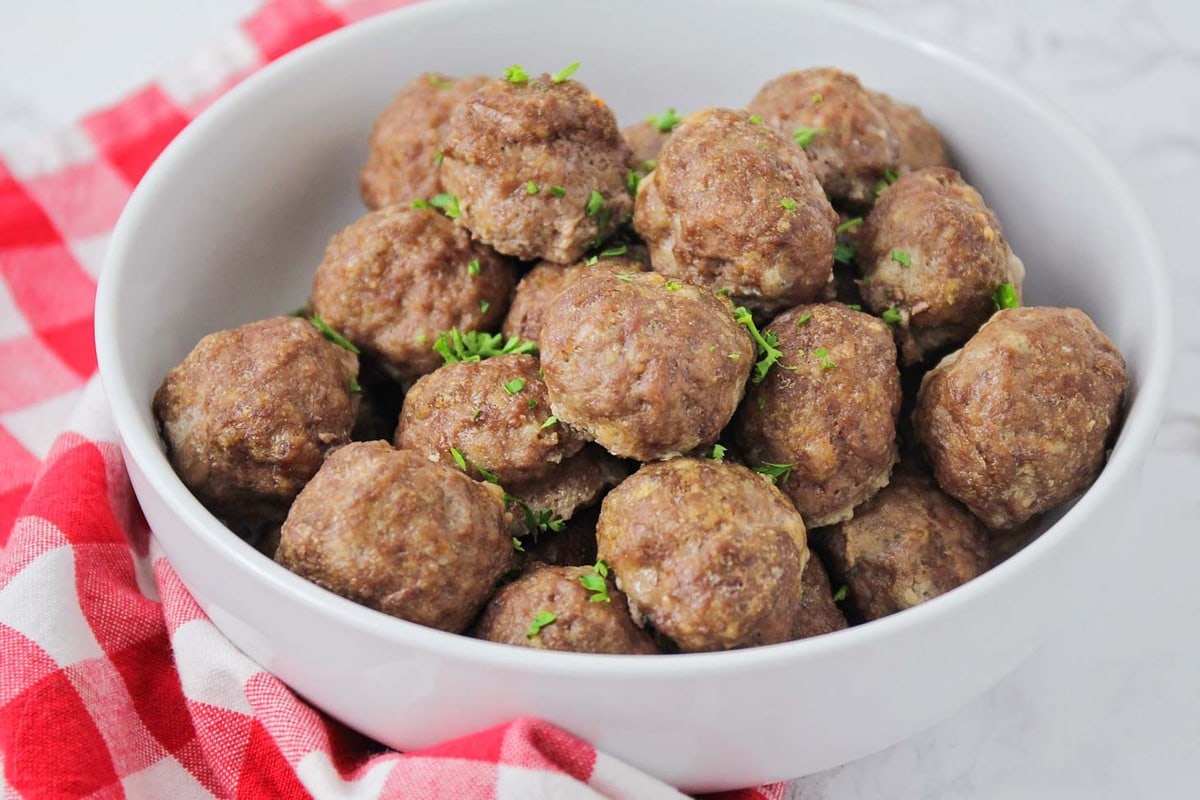



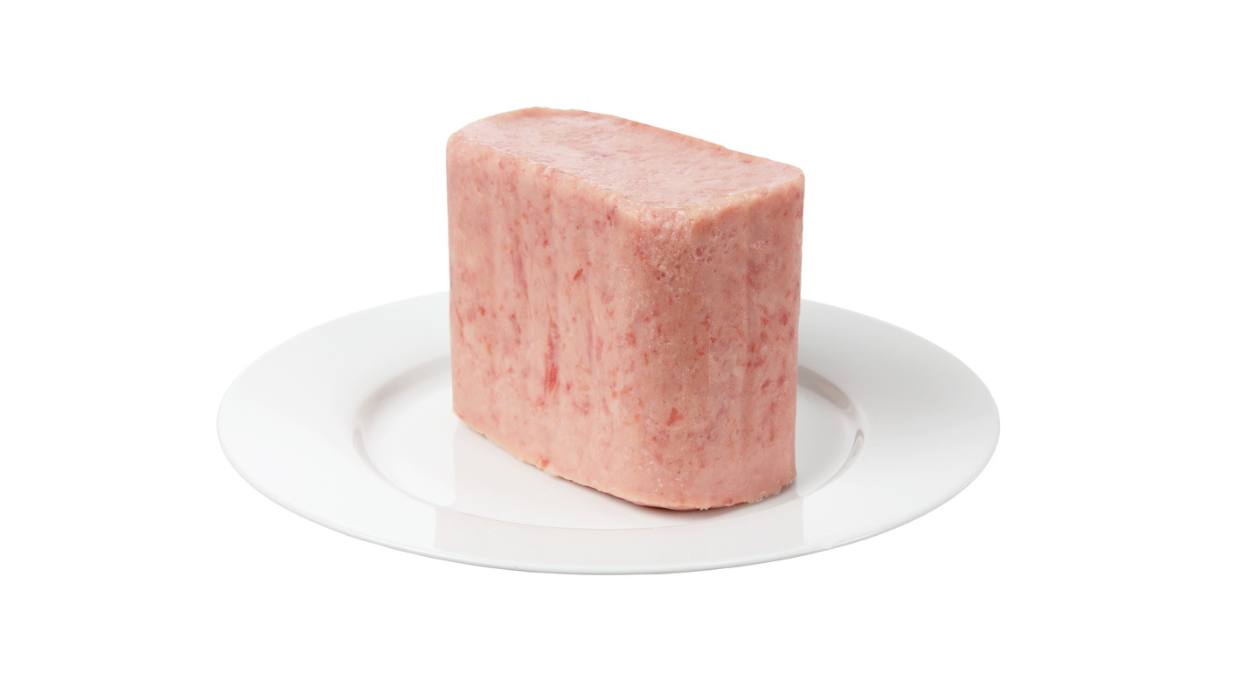
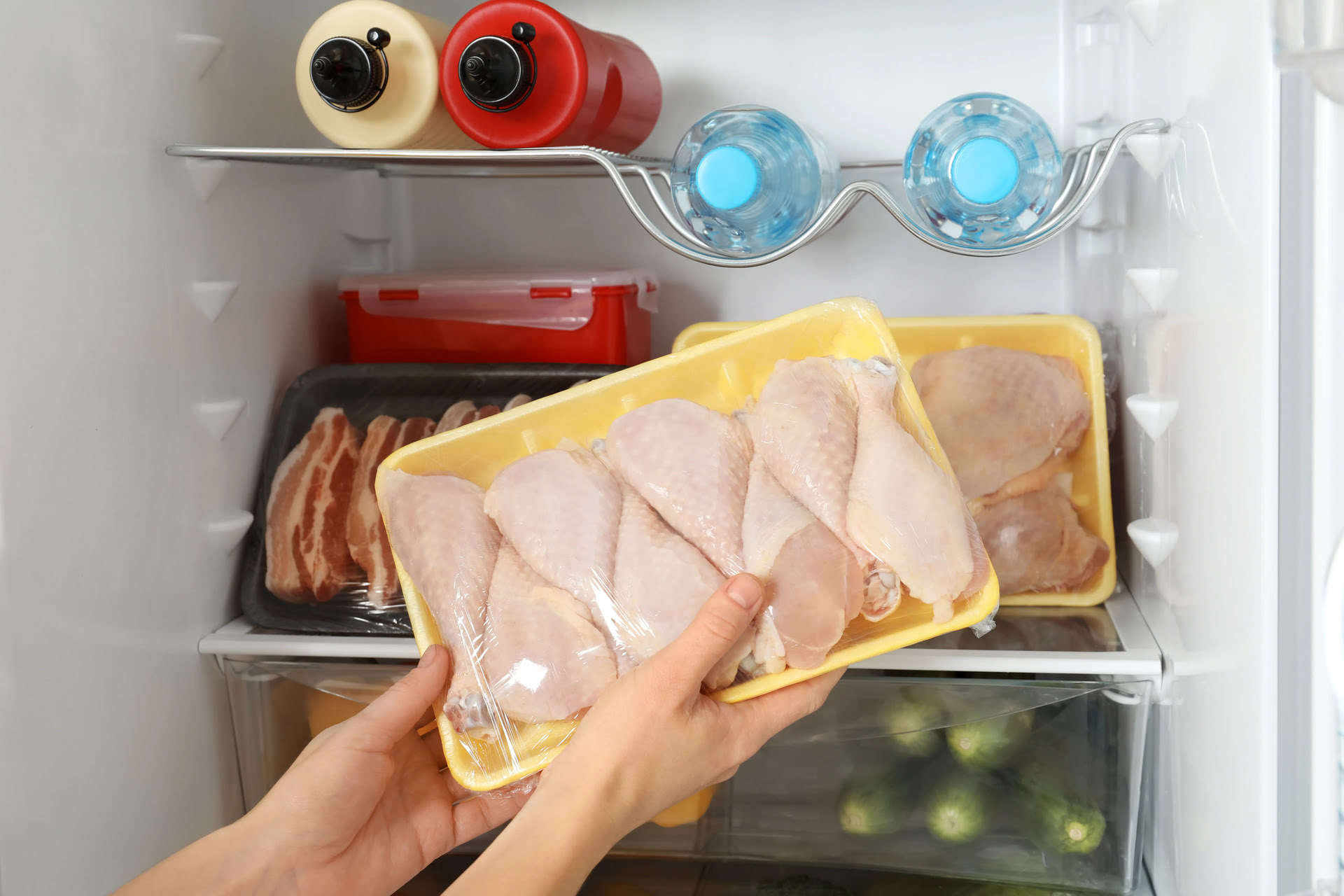
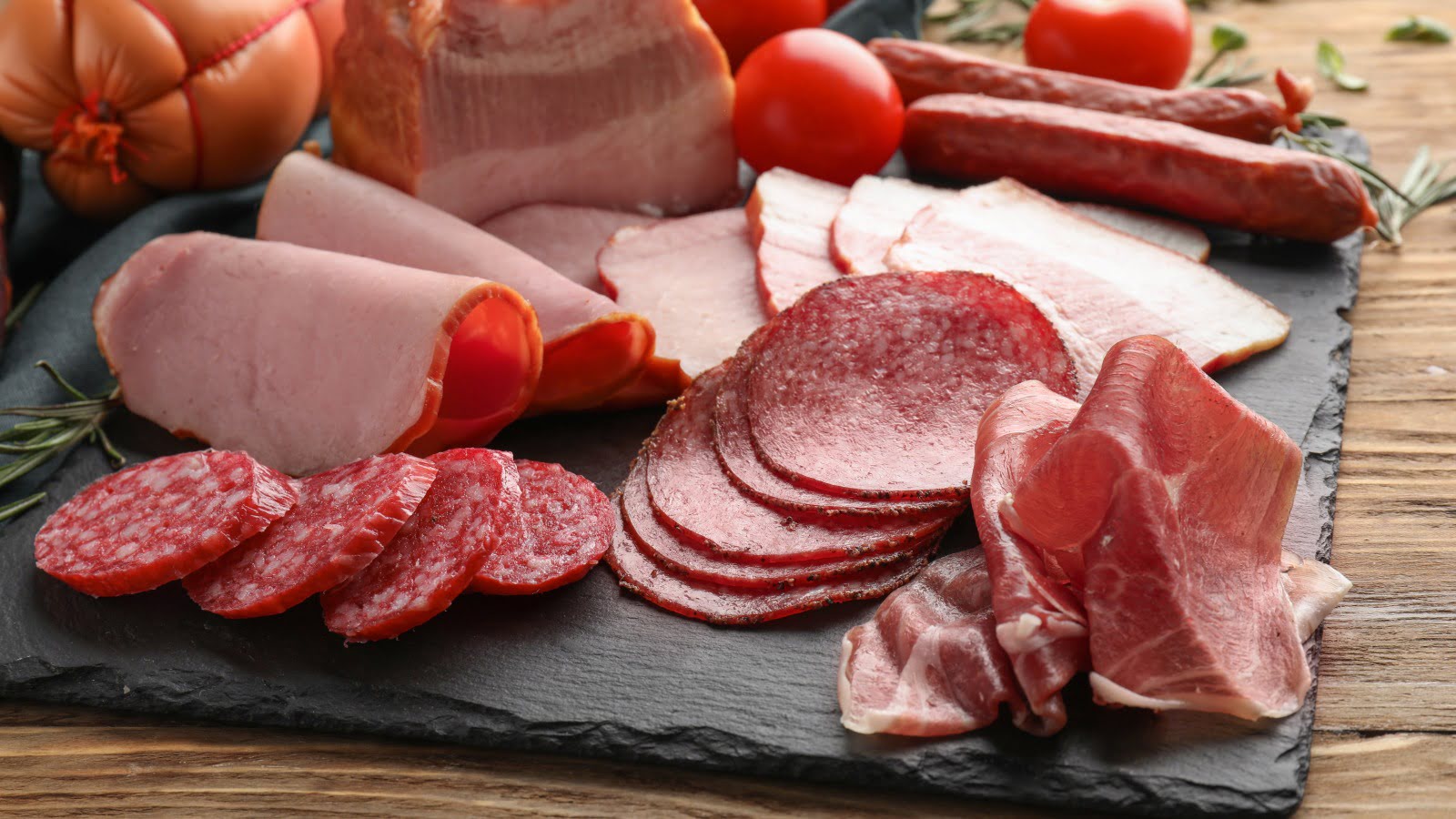
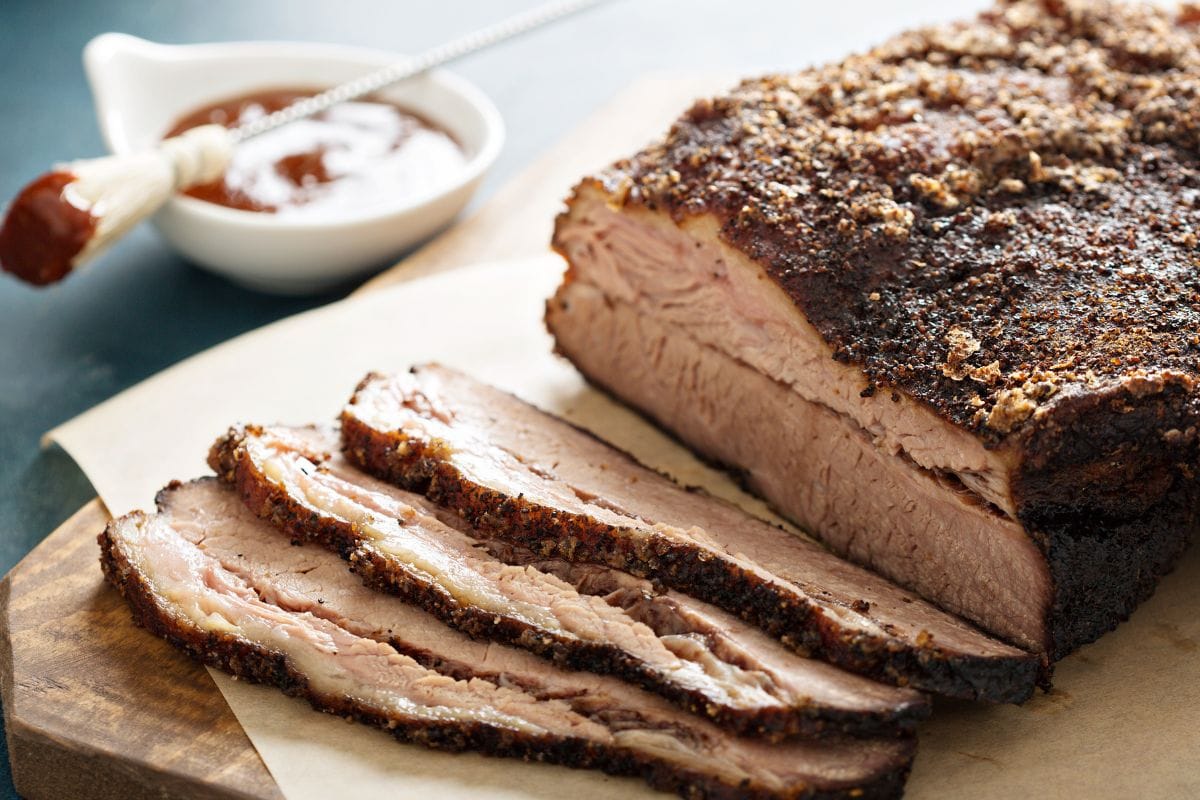
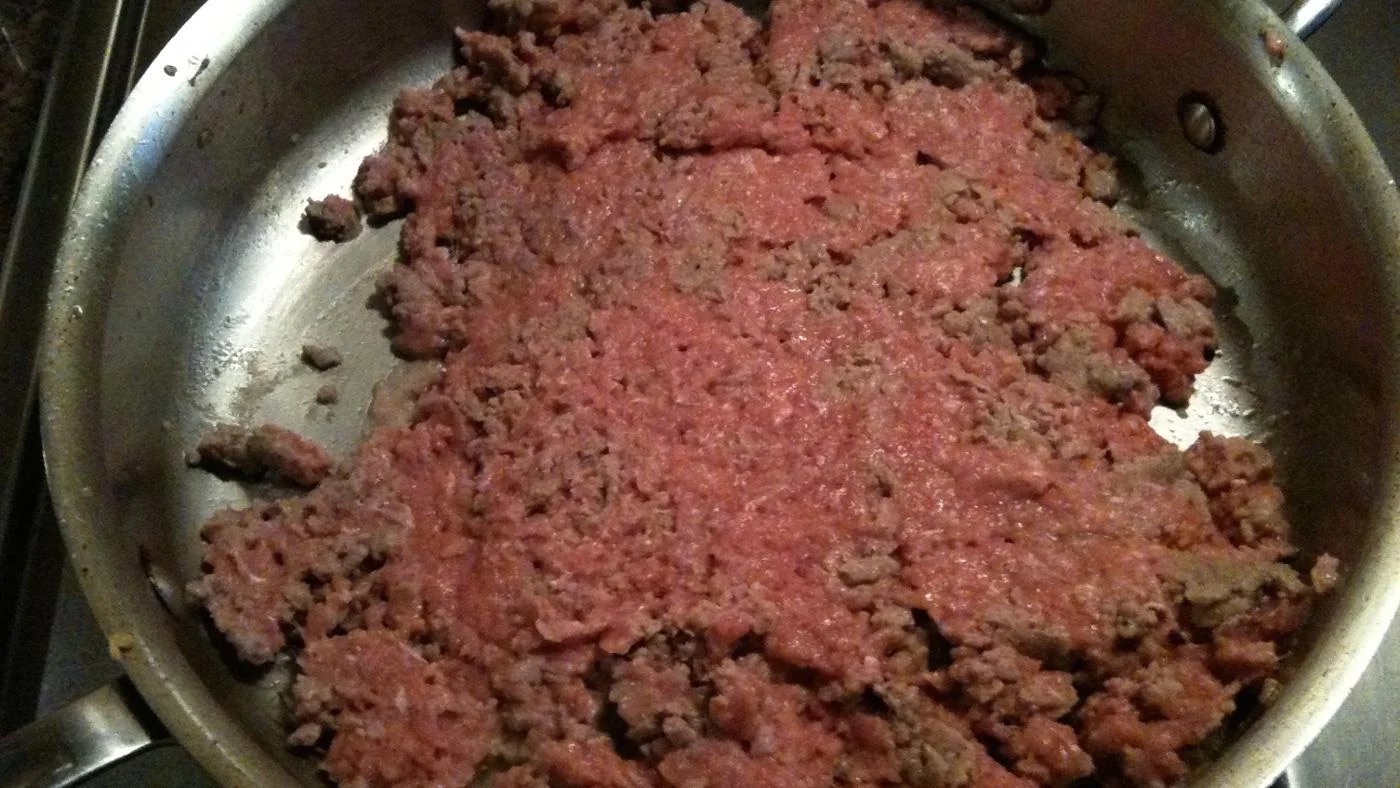
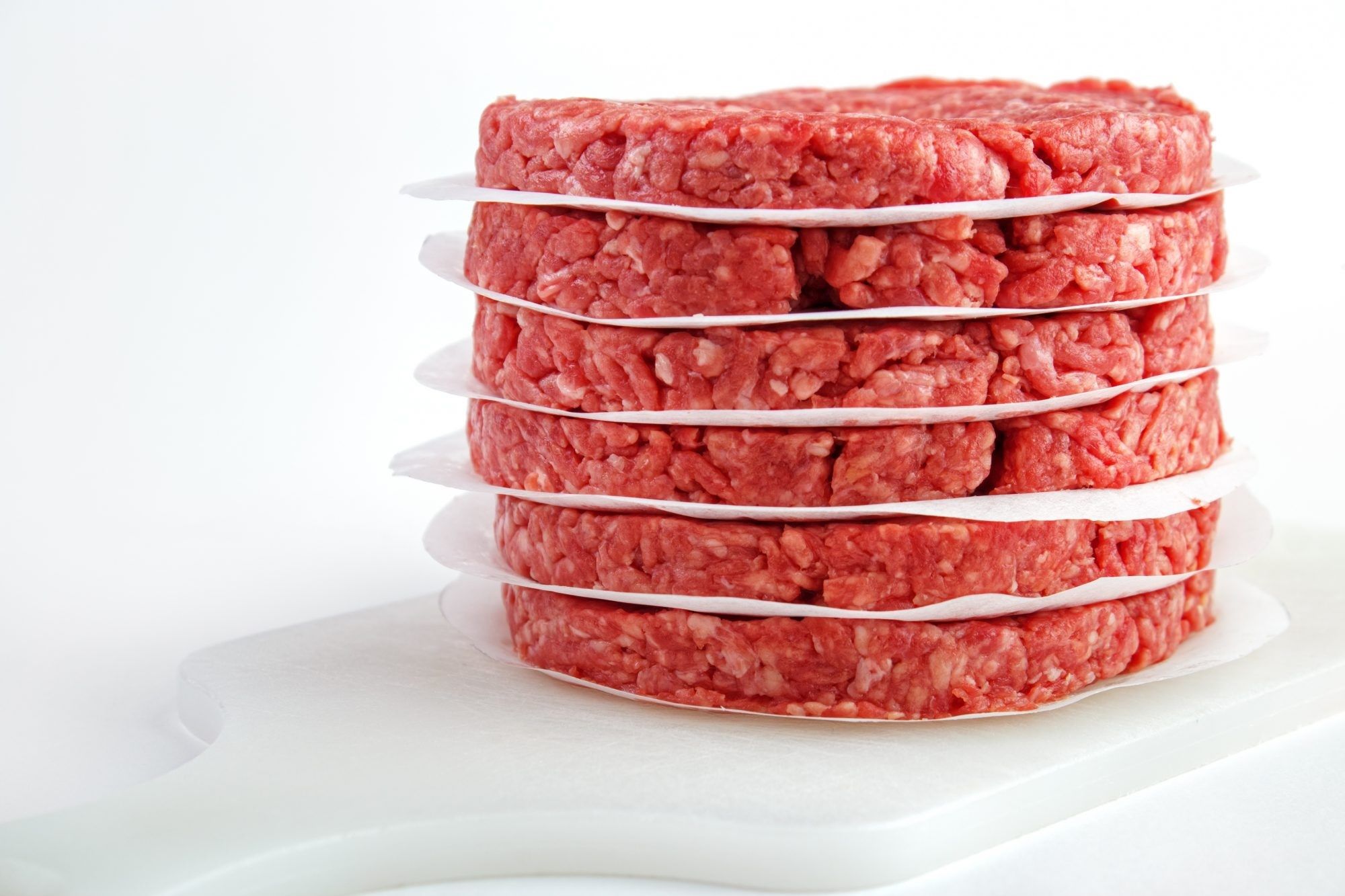
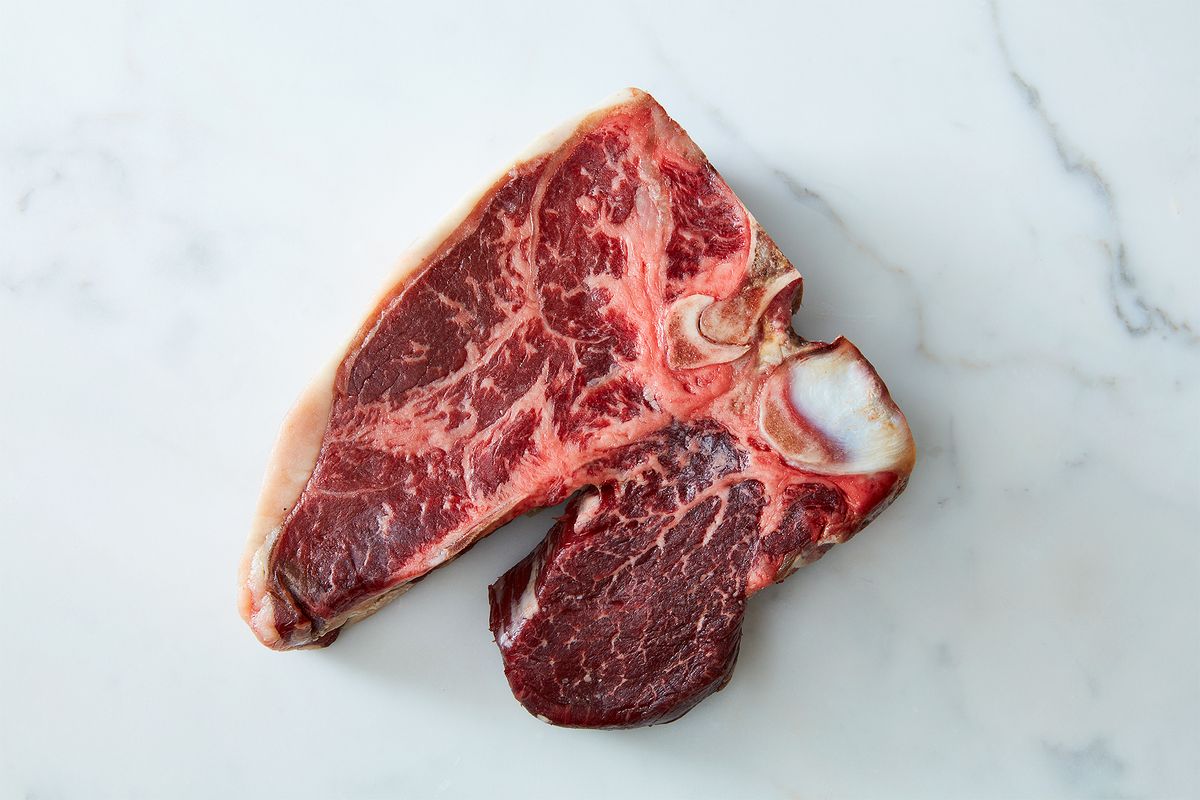
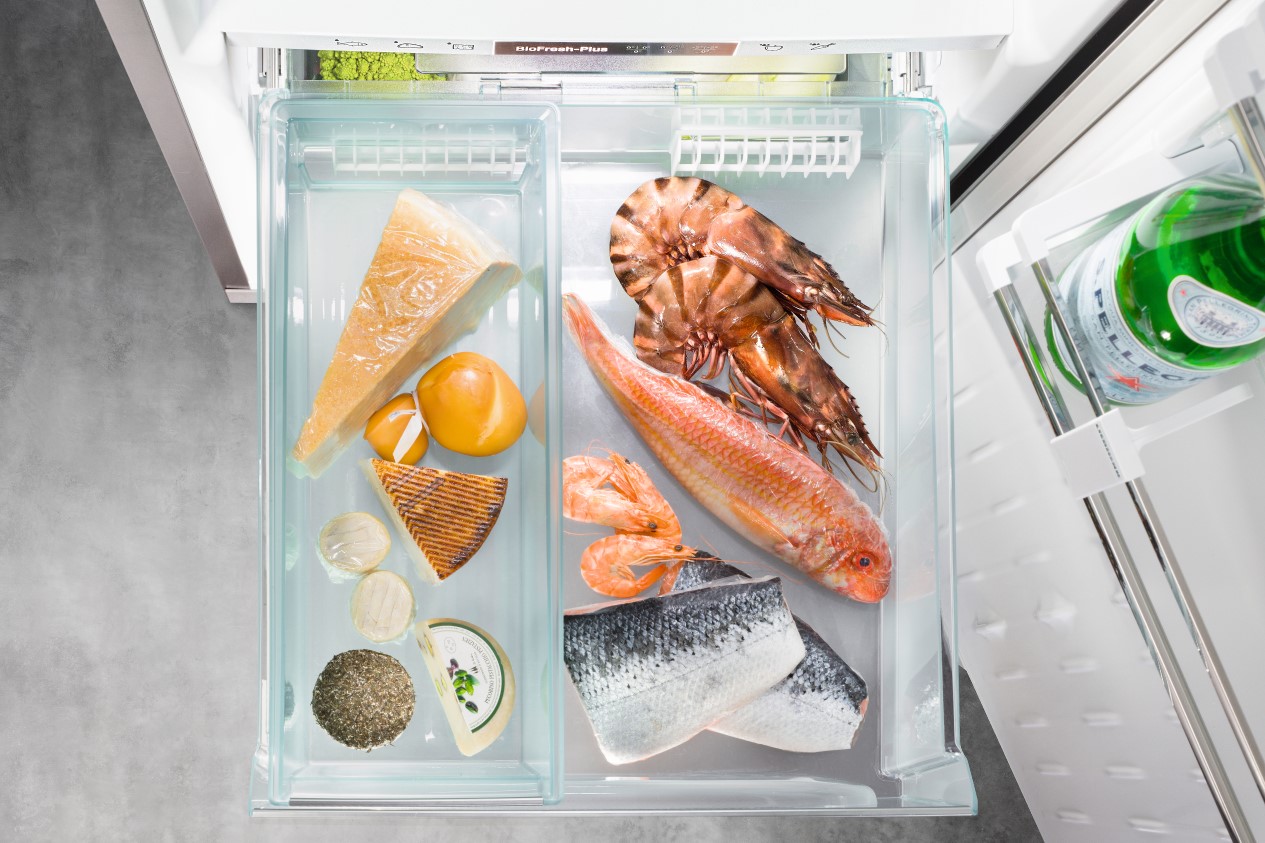

0 thoughts on “How To Store Cooked Meat”